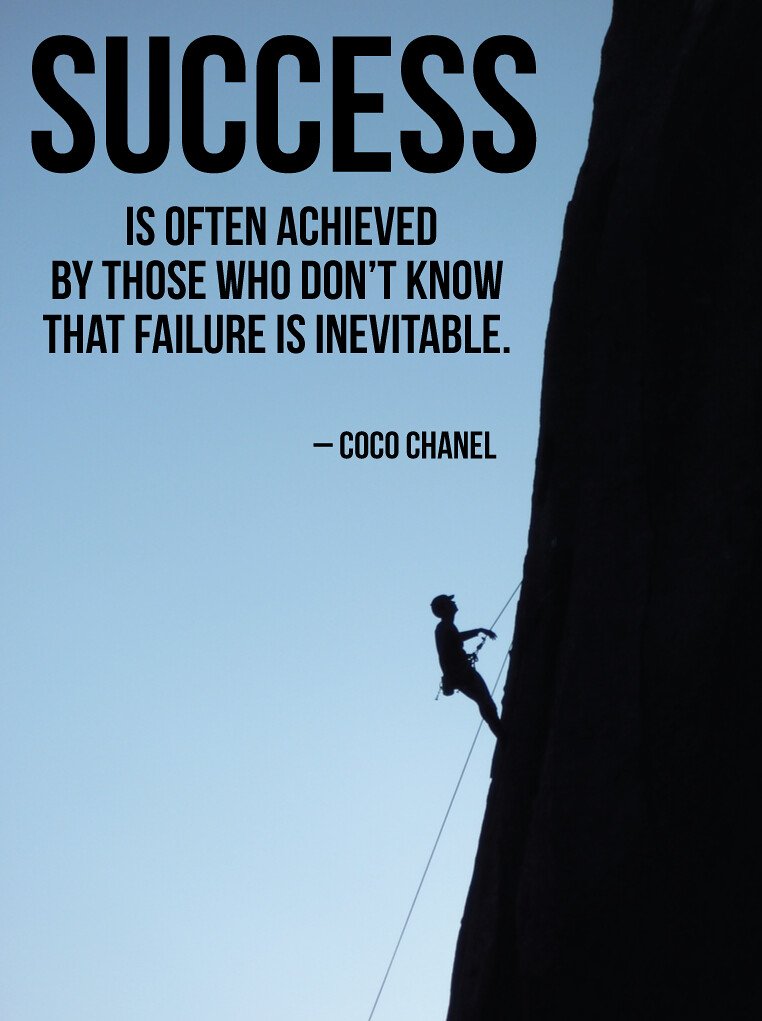Starting a new job can be both exciting and nerve-wracking. The anticipation of diving into a fresh role, meeting new colleagues, and immersing oneself in a different work environment is often accompanied by a sense of uncertainty. However, in today’s rapidly evolving professional landscape, the concept of onboarding has taken on a whole new meaning. With remote work becoming increasingly prevalent, the traditional onboarding process has undergone a significant transformation. As new hires navigate the virtual realm, it is crucial to understand the intricacies of remote onboarding and how to make the most out of this unique experience. In this guide, we will explore the ins and outs of remote work onboarding, equipping new employees with the knowledge and tools they need to seamlessly integrate into their new remote work environment.
Table of Contents
- Remote Work: The New Normal for Onboarding
- Navigating the Virtual Onboarding Process: Challenges and Solutions
- Building Connections from Afar: Strategies for Remote New Hires
- Setting Yourself Up for Success: Tips for Thriving in a Remote Work Environment
- Mastering Remote Collaboration: Tools and Techniques for Effective Onboarding
- Q&A
- In Conclusion

Remote Work: The New Normal for Onboarding
As the world continues to adapt to the challenges brought about by the COVID-19 pandemic, remote work has emerged as the new normal for onboarding. Companies across industries are embracing this shift, recognizing the numerous benefits it offers. Here are some key reasons why remote work is becoming the preferred method for onboarding new employees:
- Flexibility: Remote onboarding allows new hires to work from the comfort of their own homes, eliminating the need for commuting and providing them with the flexibility to manage their work-life balance more effectively.
- Cost savings: By adopting remote onboarding practices, companies can significantly reduce expenses associated with office space, utilities, and other overhead costs. This allows organizations to allocate resources more efficiently and invest in other areas of their business.
- Global talent pool: Remote onboarding opens up opportunities to tap into a diverse talent pool from around the world. Companies are no longer limited by geographical boundaries and can attract top talent regardless of their location.
While remote onboarding may present its own set of challenges, such as ensuring effective communication and maintaining team cohesion, companies are finding innovative ways to overcome these obstacles. With the right tools and strategies in place, remote onboarding can be a seamless and successful process, enabling organizations to adapt and thrive in the new normal.

Navigating the Virtual Onboarding Process: Challenges and Solutions
As organizations adapt to the new normal of remote work, virtual onboarding has become a crucial aspect of welcoming and integrating new employees into the company culture. However, this transition comes with its fair share of challenges. One of the main hurdles faced during virtual onboarding is the lack of face-to-face interaction, which can make it difficult for new hires to establish personal connections and build relationships with their colleagues.
Challenges:
- Limited social interaction: Without the opportunity for casual conversations in the office or team-building activities, new employees may feel isolated and struggle to form connections with their peers.
- Technology barriers: Technical issues, such as poor internet connectivity or unfamiliarity with virtual collaboration tools, can hinder the onboarding process and impede effective communication.
- Information overload: Absorbing a vast amount of information remotely can be overwhelming for new hires, making it challenging to fully grasp company policies, procedures, and expectations.
Solutions:
- Virtual buddy system: Pairing new hires with experienced employees who can provide guidance and support can help alleviate the lack of social interaction and foster a sense of belonging.
- Comprehensive onboarding materials: Providing easily accessible and well-organized resources, such as video tutorials, FAQs, and interactive modules, can help new employees navigate the information overload and understand their roles more effectively.
- Regular check-ins and team meetings: Scheduling frequent virtual meetings and one-on-one sessions can create opportunities for new hires to interact with their colleagues, ask questions, and receive feedback, promoting a sense of connection and collaboration.
By acknowledging and addressing the challenges of virtual onboarding, organizations can implement effective solutions that ensure a smooth and successful integration process for new employees, setting them up for long-term success in their remote work environment.

Building Connections from Afar: Strategies for Remote New Hires
Starting a new job remotely can be challenging, especially when it comes to building connections with your colleagues. However, with the right strategies, you can establish meaningful relationships and feel like a valued member of the team, even from a distance.
1. Leverage virtual communication tools: Take advantage of video conferencing platforms, instant messaging apps, and project management tools to stay connected with your team. Schedule regular check-ins with your manager and colleagues to discuss work-related matters and get to know each other on a personal level.
2. Participate in virtual team-building activities: Engage in virtual team-building activities to foster a sense of camaraderie and build relationships with your colleagues. Join online social events, virtual coffee breaks, or team-building games to connect with your team members in a relaxed and informal setting.
3. Seek out mentorship opportunities: Reach out to experienced team members or mentors who can provide guidance and support as you navigate your new role. Establishing a mentorship relationship can help you gain insights into the company culture, learn about best practices, and receive valuable feedback.
By implementing these strategies, you can overcome the challenges of remote onboarding and build strong connections with your colleagues, ensuring a successful start to your new job.

Setting Yourself Up for Success: Tips for Thriving in a Remote Work Environment
Working remotely offers flexibility and freedom, but it also comes with its own set of challenges. To ensure you thrive in a remote work environment, here are some valuable tips:
- Create a dedicated workspace: Designate a specific area in your home solely for work. This will help you mentally separate your personal life from your professional responsibilities.
- Establish a routine: Stick to a consistent schedule to maintain productivity and structure. Set clear start and end times, take regular breaks, and avoid the temptation to work beyond your designated hours.
- Communicate effectively: In a remote setting, communication is key. Utilize various tools such as email, instant messaging, and video conferencing to stay connected with your team. Be proactive in sharing updates, asking questions, and seeking clarification.
- Stay organized: Keep track of your tasks and deadlines by using project management tools or digital calendars. Prioritize your workload and break it down into manageable chunks to stay focused and meet your goals.
- Take care of yourself: Working remotely can blur the boundaries between work and personal life. Remember to take breaks, exercise regularly, and maintain a healthy work-life balance. Prioritize self-care to avoid burnout and maintain your overall well-being.
By implementing these tips, you’ll be well on your way to thriving in a remote work environment. Embrace the opportunities that remote work offers and make the most of your newfound flexibility!
Mastering Remote Collaboration: Tools and Techniques for Effective Onboarding
When it comes to remote collaboration, effective onboarding is crucial for ensuring a smooth transition and seamless integration of new team members. In this section, we will explore a range of tools and techniques that can help you master remote collaboration and streamline the onboarding process.
1. Communication Tools:
- Video Conferencing: Platforms like Zoom, Microsoft Teams, or Google Meet enable face-to-face interactions, fostering a sense of connection and enhancing communication.
- Instant Messaging: Tools such as Slack or Microsoft Teams chat allow for quick and efficient communication, enabling team members to collaborate in real-time.
- Project Management Software: Utilize tools like Trello, Asana, or Jira to assign tasks, track progress, and ensure everyone is on the same page.
2. Virtual Onboarding Techniques:
- Structured Onboarding Plan: Create a detailed plan that outlines the onboarding process, including introductions to team members, training sessions, and access to necessary resources.
- Mentorship Programs: Pair new hires with experienced team members who can provide guidance, answer questions, and help them navigate the remote work environment.
- Virtual Team Building Activities: Organize virtual team-building exercises, such as online games or virtual coffee breaks, to foster camaraderie and build relationships among team members.
3. Document Collaboration Tools:
- Cloud Storage: Services like Google Drive, Dropbox, or OneDrive allow for easy file sharing and collaboration, ensuring everyone has access to the latest versions of documents.
- Collaborative Editing: Tools like Google Docs or Microsoft Office 365 enable multiple team members to work on the same document simultaneously, facilitating real-time collaboration.
- Version Control: Utilize version control systems like Git or Subversion to track changes, manage revisions, and avoid conflicts when collaborating on code or other technical documents.
By leveraging these tools and techniques, you can enhance remote collaboration and ensure a successful onboarding experience for new team members. Embrace the power of technology and effective communication to foster a cohesive and productive remote work environment.
Q&A
What is remote work?
Remote work refers to the practice of working outside of a traditional office environment. It allows employees to work from home, coffee shops, or any location with an internet connection.
What is onboarding?
Onboarding is the process of integrating new employees into a company. It involves providing them with the necessary tools, information, and support to become productive and engaged members of the team.
How can remote work impact the onboarding process?
Remote work can present unique challenges during the onboarding process, as new hires may not have the same level of face-to-face interaction with their colleagues and managers. However, with the right strategies and technologies in place, remote onboarding can be just as effective as in-person onboarding.
What are some tips for remote onboarding?
To ensure a successful remote onboarding experience, it is important to establish clear communication channels, provide comprehensive training materials, and schedule regular check-ins with new hires. Additionally, fostering a sense of community through virtual team-building activities can help new employees feel connected and engaged.
What technologies can facilitate remote onboarding?
Technologies such as video conferencing tools, project management software, and virtual collaboration platforms can greatly facilitate remote onboarding. These tools enable effective communication, seamless document sharing, and real-time collaboration, making the onboarding process smoother and more efficient.
How can companies create a sense of belonging for remote new hires?
To create a sense of belonging for remote new hires, companies can organize virtual meet-and-greet sessions, assign mentors or buddies, and encourage participation in online team activities. Regularly recognizing and celebrating achievements can also help remote employees feel valued and connected to the company culture.
What are the benefits of remote onboarding?
Remote onboarding offers several benefits, including increased flexibility, reduced costs associated with physical office space, and access to a wider talent pool. It also promotes a culture of trust and autonomy, as remote employees are often given more freedom to manage their own schedules and work environments.
How can remote onboarding be improved?
To improve remote onboarding, companies can gather feedback from new hires and make adjustments accordingly. Providing ongoing support and resources, fostering open communication, and continuously refining the onboarding process based on best practices can contribute to a more effective and engaging remote onboarding experience.
In Conclusion
As we conclude this guide on remote work and onboarding for new hires, we hope that you have found it to be a valuable resource in navigating the virtual landscape of your new professional journey.
Embracing the world of remote work can be both exciting and challenging, but with the right mindset and tools at your disposal, you can thrive in this ever-evolving digital realm. Remember, you are not alone in this adventure. Countless individuals have successfully embarked on their remote work journeys, and so can you.
As you embark on your remote onboarding experience, keep in mind that building connections and fostering relationships is just as important in the virtual world as it is in the physical one. Take the time to engage with your colleagues, ask questions, and seek guidance when needed. Collaboration and communication are the pillars that will help you forge strong bonds with your team, even if you are miles apart.
While remote work offers flexibility and freedom, it also demands discipline and self-motivation. Establishing a routine, setting clear goals, and managing your time effectively will be crucial in ensuring your success. Remember, you are the captain of your own ship, navigating the vast ocean of remote work possibilities.
Technology will be your greatest ally in this remote work journey. Embrace the plethora of digital tools available to you, from project management platforms to video conferencing software. These tools will not only streamline your work processes but also enable seamless collaboration with your team, regardless of geographical barriers.
Lastly, never underestimate the power of self-care. Remote work can blur the boundaries between personal and professional life, making it essential to establish a healthy work-life balance. Take breaks, engage in activities that bring you joy, and prioritize your well-being. Remember, a happy and fulfilled individual is a productive one.
As you embark on this new chapter of your professional life, we wish you nothing but success and fulfillment in your remote work journey. Embrace the challenges, seize the opportunities, and let your creativity soar in this digital realm. Welcome to the world of remote work, where the possibilities are endless, and the future is yours to shape.
As an affiliate, my content may feature links to products I personally use and recommend. By taking action, like subscribing or making a purchase, you’ll be supporting my work and fueling my taco cravings at the same time. Win-win, right?
Want to read more? Check out our Affiliate Disclosure page.